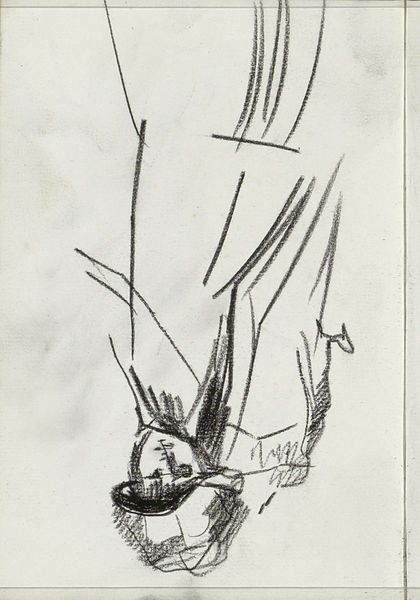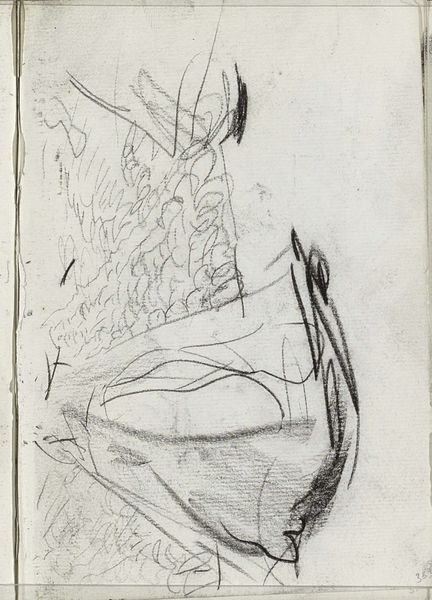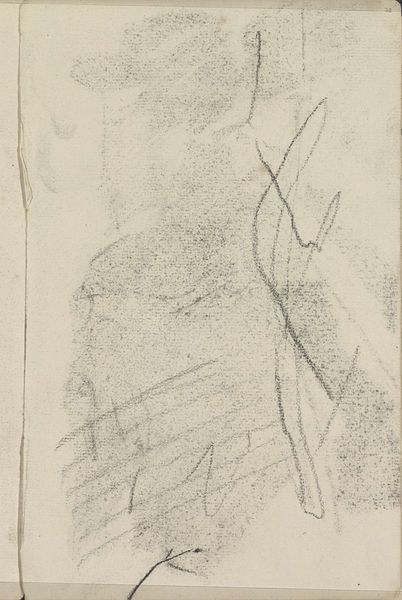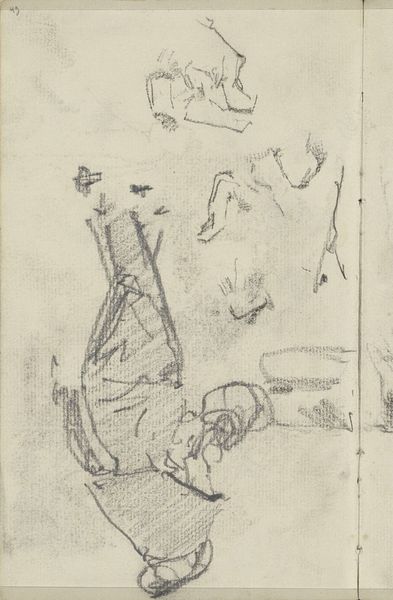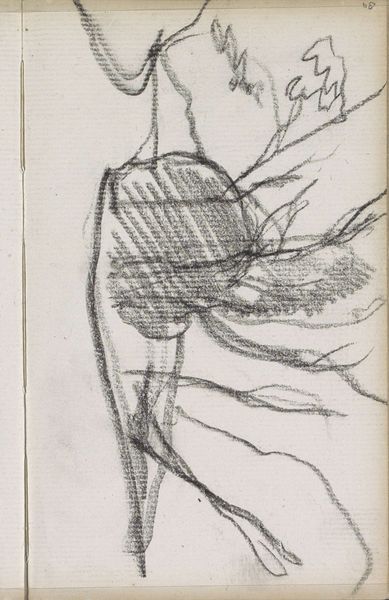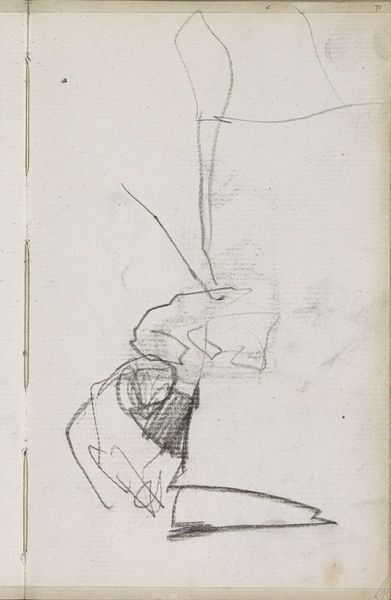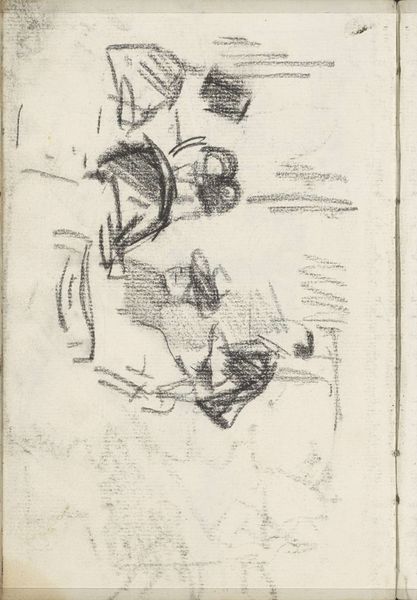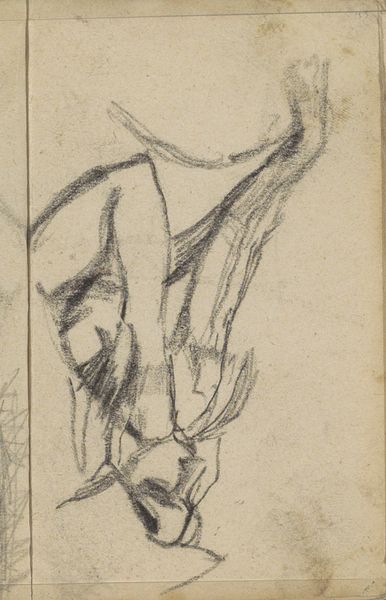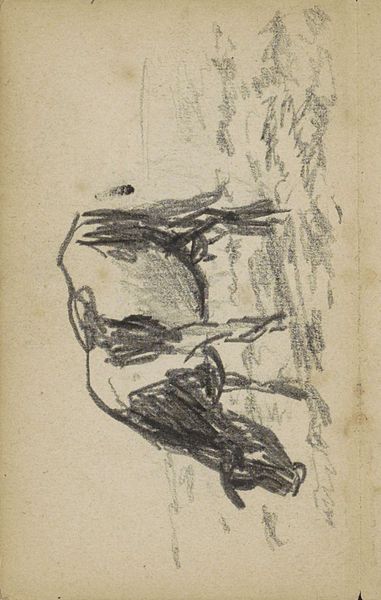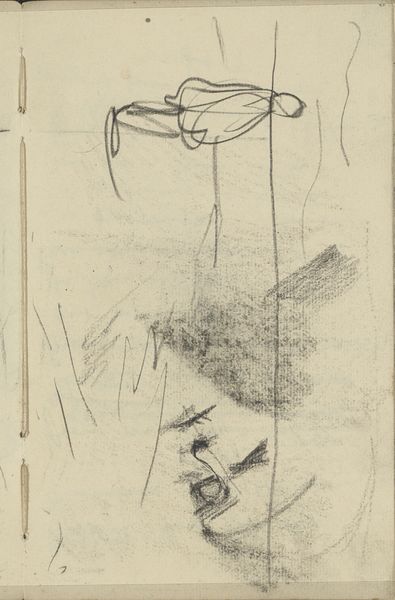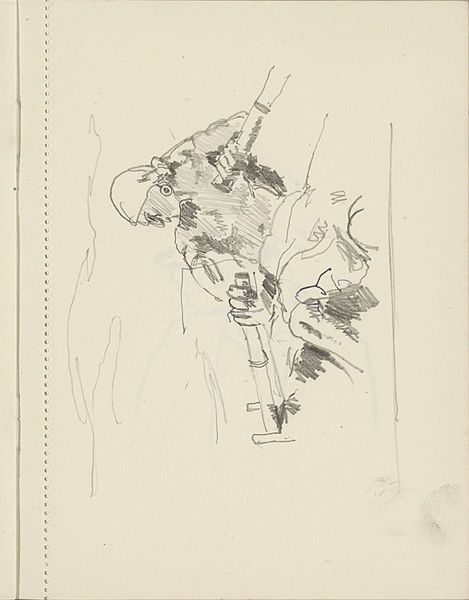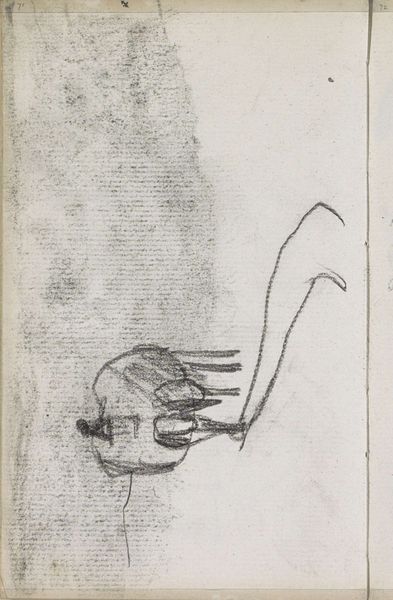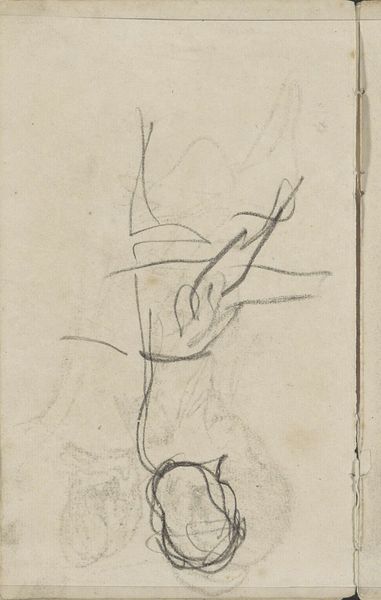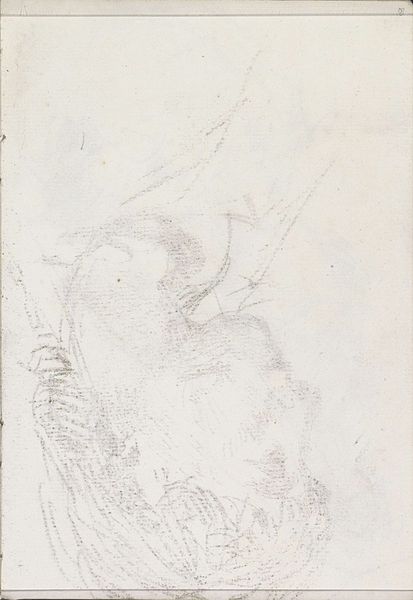
Copyright: Rijks Museum: Open Domain
Editor: We're looking at Isaac Israels' "Abklatsch van de krijttekening op pagina 36," a graphite drawing on paper, dating from 1886-1903. It's quite delicate, almost ghostly. What do you see in this piece beyond a simple sketch? Curator: I see more than just a fleeting impression. Consider the period, the late 19th century, when rapid industrialization and urbanization were reshaping society. Israels, aligned with Impressionism, captures a figure, likely a working-class individual, not with heroic grandeur but with quiet dignity amidst these turbulent times. The "ghostly" quality you mention could be interpreted as representing the often-overlooked presence of these figures. What power dynamics are at play? Editor: Power dynamics? I hadn't thought of that, I suppose I saw it as very personal, intimate even. Curator: Exactly. Israels offers an intimate glimpse into a life, a personhood. But let’s also consider who Israels was: a man from a privileged background observing the working class. Does his perspective inherently influence the portrayal? Does the seemingly incomplete nature of the sketch highlight the fragmentariness and perhaps even the precarity of working class lives during the period? How do you think the work speaks to intersectionality and representation, if at all? Editor: I see your point now. The sketch, in its unfinished state, seems to hint at social inequalities and untold stories. Curator: Precisely! Art allows us to question these dynamics. It invites us to not only appreciate beauty, but also to critically examine historical context and social realities. Editor: I’ll definitely think about Impressionism in a new light now. Curator: And that's the point, isn't it? To continually challenge our perceptions.
Comments
No comments
Be the first to comment and join the conversation on the ultimate creative platform.
